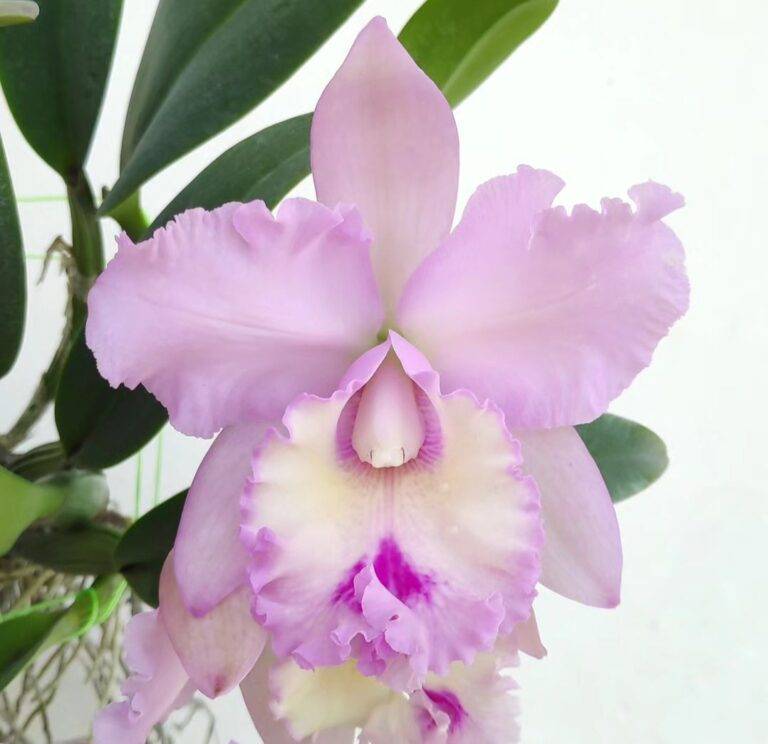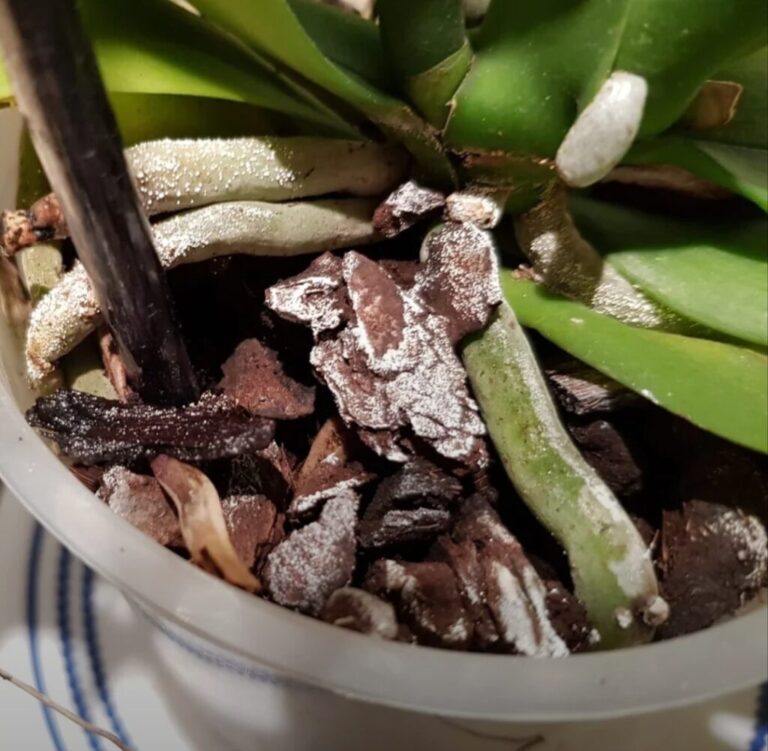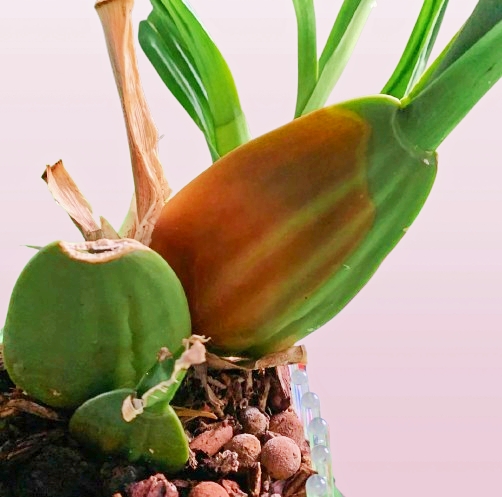Welcome to Orchid Aphid Solutions, where we bring you the ultimate remedy to bid farewell to aphids that threaten the beauty and health of your precious orchids. Orchids, renowned for their delicate elegance and vibrant colors, deserve nothing less than perfect care. Unfortunately, aphids, those tiny but relentless pests, can wreak havoc on these exquisite plants, causing significant damage and distress to orchid enthusiasts.
Say goodbye to the frustrations caused by aphids on your precious orchids. Trust Orchid Aphid Solutions to help you regain control over your orchid collection, enabling these stunning flowers to thrive and mesmerize once again. Together, let us embark on a journey towards a world where orchids reign supreme, untouched by the nuisances of aphids.
Orchid Aphids Solutions

Manual Removal:
Manual removal is a practical and effective method for dealing with orchid aphids, especially when the infestation is relatively small or localised. Here’s a step-by-step guide for manually removing aphids from your orchids:
Prepare your materials: Get a soft cloth, a cotton swab, or a small brush, as well as a container filled with water, rubbing alcohol, or a mild soapy solution.
Inspect your orchids: Carefully examine your orchid plants, paying close attention to the undersides of leaves, new growth, and areas where aphids tend to congregate, such as buds or tender shoots.
Remove aphids by hand: Gently wipe the affected areas with the cloth, using your fingers to squash any visible aphids. Alternatively, you can dab individual aphids with a cotton swab dipped in rubbing alcohol or soapy water to kill them.
Pay attention to hard-to-reach areas. Orchid aphids can hide in crevices or curl up tightly on the stems or leaf undersides. Use a small brush or a cotton swab to dislodge them and remove them from the plant.
Dispose of aphids: After removing the aphids, carefully place them in the container with water, alcohol, or a soapy solution to prevent them from escaping or returning to the orchid.
Repeat the process: Check your orchids regularly, ideally on a weekly basis, and repeat the manual removal process as necessary until the aphid population is under control.
It’s important to note that manual removal may not be sufficient for severe or widespread infestations. In such cases, it is recommended to combine manual removal with other methods, such as insecticidal soap or natural predators, to achieve better results.
Water Spray:
Water spraying is a simple yet effective method for controlling orchid aphids. It works by dislodging and removing the aphids from the plants. Here’s how you can use water spray to combat aphids on your orchids:
Select a suitable spraying device. You can use a handheld spray bottle, a hose with a nozzle attachment, or a small garden sprayer. Ensure that the spray has enough pressure to dislodge the aphids without causing damage to the orchid plants.
Prepare the spraying area: Take your orchids to an outdoor space or an area where the water spray won’t cause any damage. If it’s not possible to move the orchids, place them in a sink or bathtub where excess water can be easily drained.
Adjust the water pressure: If you’re using a hose, adjust the nozzle to create a strong, focused spray. For a handheld spray bottle or garden sprayer, make sure the nozzle is set to produce a fine but forceful stream of water.
Spray the affected areas: Direct the water spray onto the orchid plants, focusing on the undersides of leaves, stems, buds, and any areas where aphids are present. It’s important to cover all affected surfaces thoroughly.
Repeat the process: Repeat the water spray treatment every few days or as needed until the aphids are significantly reduced. Keep in mind that it may take multiple treatments to completely eliminate the aphid population.
Monitor the plants: Regularly inspect your orchids after each water spray treatment to check for any reinfestation or remaining aphids. If necessary, continue with the water spray method or consider using additional control measures.
Water spraying is best suited for smaller infestations and can be used as a preventive measure even when aphids are not yet present. Remember to adjust the water pressure appropriately to avoid damaging delicate orchid foliage or blooms.
Insecticidal Soap:
Insecticidal soap is a safe and effective solution for controlling orchid aphids. It works by suffocating the pests upon contact while being relatively gentle on the orchid plants. Here’s how you can use insecticidal soap to combat aphids on your orchids:
Choose a suitable insecticidal soap. Look for a commercial insecticidal soap that is specifically formulated for use on orchids or ornamental plants. Read the label carefully and follow the instructions regarding dilution ratios and application methods.
Prepare the soap solution: In a clean spray bottle, mix the insecticidal soap with water according to the instructions on the product label. It’s crucial to follow the recommended dilution ratio to ensure the soap is effective without causing harm to the orchids.
Test on a small area: Before applying the insecticidal soap to the entire plant, test it on a small, inconspicuous part of the orchid to check for any adverse reactions. Wait for 24 hours and ensure there are no signs of leaf damage or discoloration.
Apply the soap solution: Thoroughly spray the affected orchid plants, ensuring complete coverage of all surfaces, including the undersides of leaves and stems. Pay extra attention to areas where aphids are concentrated, such as new growth or buds.
Allow the soap to work: Leave the insecticidal soap on the orchid plants for the recommended duration specified on the product label. This allows the soap to suffocate the aphids and disrupt their feeding and reproduction.
Rinse if necessary: After the recommended time, if the product label suggests rinsing off the soap, gently rinse the orchid plants with clean water. This step helps remove any residue and prevents any potential damage to the orchid foliage.
Repeat as needed. Depending on the severity of the aphid infestation, you may need to repeat the insecticidal soap treatment at regular intervals. Follow the instructions on the product label regarding the frequency of application.
Remember to always follow the manufacturer’s instructions when using insecticidal soap and take precautions to avoid spraying in direct sunlight or extreme temperatures. Additionally, it’s important to monitor your orchids closely for any signs of reinfestation and address any new aphid colonies promptly.
Neem Oil:
Neem oil is a natural and effective solution for controlling orchid aphids. It is derived from the neem tree and works by disrupting the aphids’ feeding and reproductive processes. Here’s how you can use neem oil to combat aphids on your orchids:
Choose a high-quality neem oil: Look for cold-pressed or pure neem oil from a reputable source. Ensure that the neem oil is specifically labelled for use on orchids or ornamental plants.
Prepare the neem oil solution: In a clean spray bottle, mix the neem oil with water according to the instructions on the product label. Generally, a ratio of 1-2 tablespoons of neem oil per gallon of water is recommended, but always follow the specific instructions provided.
Test on a small area: Before applying the neem oil solution to the entire orchid plant, test it on a small, inconspicuous part of the plant to check for any adverse reactions. Wait for 24 hours and ensure there are no signs of leaf damage or discoloration.
Apply the neem oil solution: Thoroughly spray the affected orchid plants, making sure to cover all surfaces, including the undersides of leaves, stems, and buds. Pay extra attention to areas where aphids are concentrated.
Repeat the application: Repeat the neem oil treatment every 7–10 days or as directed on the product label. This helps ensure that newly hatched aphids are also targeted and any remaining aphids are eliminated.
Continue regular applications: Even after the aphid population is under control, it’s beneficial to continue applying neem oil preventively every few weeks. This helps maintain a protective barrier against future aphid infestations.
Follow safety precautions: When using neem oil, it’s important to follow the safety guidelines provided by the manufacturer. Wear protective gloves and clothing, avoid contact with eyes and skin, and keep the product out of reach of children and pets.
Note potential plant sensitivity: Some orchid species may be more sensitive to neem oil than others. If you notice any adverse effects on your orchids, discontinue use immediately and rinse the plants thoroughly with water.
Neem oil is generally safe and environmentally friendly when used as directed. However, it’s always a good idea to test the solution on a small area of your orchids and monitor the plants closely for any adverse reactions.
Beneficial Insects:
Using beneficial insects is an organic and sustainable method to control orchid aphids. These natural predators feed on aphids and can help reduce their population without the need for chemical interventions. Here are some beneficial insects you can introduce to your orchid-growing area:
Ladybirds (Ladybirds): Ladybirds are well-known aphid predators. Both adult ladybirds and their larvae feed on aphids, consuming large numbers of them. You can attract ladybirds to your orchids by planting companion plants they are attracted to, such as dill, fennel, or yarrow. You can also purchase ladybirds from gardening supply stores or online and release them on your orchids.
Lacewings: Lacewing larvae are voracious predators of aphids. They have long, slender bodies and are often called “aphid lions” due to their appetite for aphids. Lacewing adults feed on nectar and pollen but do not directly attack aphids. You can encourage lacewings by planting nectar-producing flowers, such as daisies or sunflowers, near your orchids. Lacewing eggs or larvae can also be purchased and released on your orchids.
Hoverflies: Hoverfly larvae, known as syrphid fly larvae, are excellent aphid predators. They resemble small, green, or yellow maggots and feed on aphids by piercing and sucking out their body fluids. Hoverflies are attracted to flowers that produce nectar and pollen, such as marigolds or sweet alyssum. By planting these flowers near your orchids, you can help attract hoverflies to your garden.
Parasitic Wasps: There are several species of parasitic wasps that specifically target aphids. These tiny wasps lay their eggs inside aphids, which then serve as hosts for their developing larvae. The wasp larvae consume the aphids from the inside, eventually killing them. These parasitic wasps are usually too small to be seen and do not pose any harm to humans or orchids. You can attract parasitic wasps by planting nectar-rich flowers and providing a suitable habitat for them in your garden.
When introducing beneficial insects, it’s important to create an environment that supports their presence. Planting a diverse range of flowers and providing suitable shelter, such as mulch or ground cover, can help attract and maintain populations of beneficial insects. Avoid using broad-spectrum insecticides that can harm beneficial insects, as they are an essential part of the natural pest control ecosystem.
Horticultural Oil
Apply a horticultural oil spray to your orchids. The oil coats and suffocates aphids while also disrupting their life cycle. Follow the manufacturer’s instructions for dilution and application frequency.
Choose the right horticultural oil: Look for a horticultural oil product specifically formulated for use on orchids or ornamental plants. Ensure that the oil is safe to use on orchids and follow the instructions provided on the product label.
.Check the weather conditions: Select a calm, dry day to apply horticultural oil to your orchids. Avoid applying the oil when temperatures are very high or when the orchids are stressed, as this can cause damage to the plants.
Prepare the oil mixture: Dilute the horticultural oil according to the instructions on the product label. Typically, a dilution ratio of 2–5 tablespoons of oil per gallon of water is recommended, but follow the specific instructions provided by the manufacturer.
Apply the oil solution: Using a clean spray bottle, thoroughly spray the affected orchid plants, covering all surfaces, including the undersides of leaves, stems, and buds. Make sure to achieve complete coverage without causing excessive dripping.
Repeat the application: Repeat the horticultural oil treatment at the recommended interval specified on the product label. This is usually every 7–14 days, but follow the manufacturer’s instructions for the specific duration between applications.
Monitor for reinfestation: Regularly monitor your orchids after each horticultural oil application to check for any signs of reinfestation. If necessary, continue with the oil treatment or consider using additional control measures.
It’s important to note that horticultural oil should not be applied when the orchids are in direct sunlight or when temperatures are extremely high, as this can cause leaf damage. Additionally, some orchid species may be more sensitive to horticultural oil, so it’s advisable to test the oil on a small area of the orchid before applying it to the entire plant. Always follow the manufacturer’s instructions regarding the specific application rate and safety precautions.
Quarantine and isolation:
Quarantining and isolating affected orchids is an important step in preventing the spread of aphids to healthy plants. It helps contain the infestation and allows you to focus on treating and controlling the aphids effectively. Here’s how you can quarantine and isolate orchids:
Identify the affected orchids: Inspect your orchid collection and identify the plants that show signs of aphid infestation. Look for aphids on the leaves, stems, buds, or any other affected areas.
Separate the affected orchids: Remove the infested orchids from the rest of your collection and place them in a separate location. This can be a different room, an isolated shelf, or even a separate greenhouse if available. The goal is to keep infested plants away from healthy ones.
Provide adequate care: Once the affected orchids are isolated, continue to provide them with proper care. Ensure they receive adequate light, temperature, humidity, and watering according to their specific requirements. Healthy orchids should also receive their regular care routine.
Treat the isolated orchids: While in isolation, you can focus on treating the aphids on the affected orchids using appropriate methods such as manual removal, water spray, insecticidal soap, neem oil, or horticultural oil. Choose the method that suits your preferences and the severity of the infestation.
Monitor the isolated orchids: Regularly inspect the isolated orchids for any signs of aphid activity. Check for new aphids, eggs, or damage caused by the pests. This will help you determine if the treatment is effective and if additional measures are necessary.
Wait for complete control: Continue treating the isolated orchids until you have successfully eliminated the aphids and there are no signs of reinfestation. It may take time and multiple treatments to achieve complete control.
Gradual reintroduction: Before reintroducing the previously isolated orchids to your main collection, closely inspect them to ensure they are aphid-free. This prevents the risk of reintroducing the pests to healthy plants.
FAQ
How do you treat aphids on orchids?
Use insecticidal soap or neem oil to control aphids on orchids. Regularly inspect the plant and apply the treatment according to the product instructions.
Are aphids bad for orchids?
Yes, aphids can be harmful to orchids. They feed on plant sap, causing damage to the leaves, buds, and flowers. They can also transmit viruses to the orchid plants.
Why do orchids get aphids?
Orchids can get aphids for various reasons, such as poor ventilation, overwatering, high humidity, or the presence of other infested plants nearby. Aphids are attracted to the tender growth and sap of orchids
How do you know if your orchid has aphids?
Signs of aphids on orchids include distorted leaves, stunted growth, curled buds, honeydew (a sticky substance) on leaves, black sooty mould growth, and the presence of small, soft-bodied insects on the plant.






